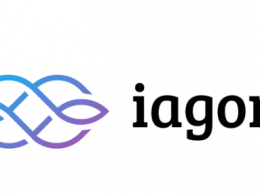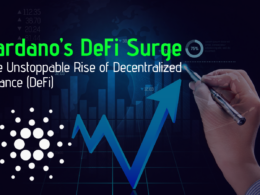Let’s take a journey with the unlikeliest of couples – a mermaid and a cowboy. They operate Tails Stake Pool and MermADA minting service. Their minting service is unique and allows for one on one consulting and custom solutions for all kinds of scenarios: jpegs, mp4, videos, movies. If you can imagine it, they can make it happen. Because of their experience and knowledge of the minting process, they are the perfect people to help us understand what minting actually is and how the backend process works. Yes, you always have the option of going to a point and click service for your minting needs. However as a creator, it is still a good idea to understand all of the options available and how your choices will impact the display of your beautiful creations. We will go through this step by step and then show you how Tails pool can simplify the process for you.
Components of Minting an NFT
NFTs are unique and valuable because of their blockchain identifiers. Because the blockchain is a decentralized ledger the identity (metadata) of each NFT is noted securely. NFTs can be stored entirely within the blockchain. However, this is expensive. Most often the metadata is noted on the blockchain with a pointer to a decentralized storage location that actually holds the NFT. This is both secure and cost effective. This means that all you are actually storing on the blockchain is a URL which points to your NFT.
The metadata for NFTs is in a format called JSON. It needs to be set up in such a way that it’s compatible with the platform you are using. Each platform should have examples of these standards so you know how to set things up.
Here is an example of a JSON meta data file:
{ “721”:{ “##policyID##”: { “##ticker##”: { “name”: “##tokenName##”, “image”: “ipfs://<ipfs_qid_hash>” } } } } |
If you want to learn more about how JSON works here is a brief tutorial
Here are the steps we need to take:
- Get all of the images ready and upload so that there is a URL for each image.
- Create a unique JSON file for each image in the correct format as shown above
- Take the time to make sure the files are in agreement and error free
As you can see this is a multi step process. It’s not extremely complicated, but it is important to make sure each step is completed correctly. Three components are linked together. Think of it like this:
Blockchain>>>>>>>JSON file>>>>>>>Image file
Storage Solutions
The next question is the destination of the uploaded images. Where do you want your NFTs to live? Certainly both you and your customers want a secure and permanent solution. This means that centralized storage is not a good idea for a couple of reasons. First, if you use AWS, what happens if they go out of business? So do your NFTs. Secondly, in a centralized solution things are easier to swap out – which negates the entire purpose of an NFT. Both you and your customers want a long term, immutable solution.
For these reasons, NFT projects generally use IPFS (Interplanetary File System). This is a secure, decentralized solution for long term storage. There are a couple of reasons this is a good idea. The address of the file depends on the content of the file. This means that if you tried to switch the image, the address would change. Secondly, IPFS doesn’t shut down. So once your file is successfully uploaded, it’s always available.
So, how do we upload to IPFS? We make life easy by using an intermediary called Pinata. This service is free up to 1GB. Simply sign up for a free account and upload your image. Once it is successfully uploaded you will receive a CID. The screen looks like this:
So the CID for my image is: Qma9xRZZpk1XJAUH498YVRTY4Vs58qVNoCXCFyPtAiuub6
This means that the IPFS URL for my image is ipfs://Qma9xRZZpk1XJAUH498YVRTY4Vs58qVNoCXCFyPtAiuub6
At this point we have securely stored our image in a decentralized way. Now we need a way to link it to the blockchain. This is where we create the JSON file for each image and fill it with metadata – including the IPFS URL. As mentioned above the JSON file format will be specific to the platform that you are using. Once complete the JSON file will also be uploaded through the minting process or as part of the minting tool if you use a service like MermADA.
At this point we have our image and JSON file created and compatible. To keep things simple and straightforward, we are writing this for a single image. You can also upload files of thousands of images and use a python script to generate attributes. It can get pretty complicated – but the underlying process always works the same way in regard to the image, the metadata and the storage. The last step in the process is to create a smart contract that ties all of the individual pieces together.
Other Considerations
It seems like a lot in the abstract, but honestly its a matter of taking things step by step. On some of the larger platforms, like OpenSea, you can mint by uploading your image and then just clicking a few buttons. The important thing to remember is that simplicity removes a lot of your creative control. There are other things that you want to consider. If you want to create different kinds of content, your setup will vary a bit. Mermada offers different guides for different products:

Other considerations include what you want your policy to be. Do you want it to be locked at a certain time? Do you want an open policy? Are you minting one or two NFTs? Is this a bulk project? Are you looking for airdrops or a token faucet? Are you interested in royalties? If so you have to mint that token first.
Personally, if I was interested in doing anything of scale, I would want experienced help. That’s where MermADA comes in. Now that you understand the basics, Let’s have a look at the minting services they provide.

They work with you to understand what you are trying to create and then provide a customized solution. This is where partnering with a minting service has advantages. They can review your project and discuss the best methods of handling your minting. Also, please note that if your team is experienced with another ecosystem, like Ethereum, Cardano does not work in exactly the same way. The community has watched some messy mints roll out as a result of teams assuming that all minting is the same. This is not the look you want as a project.
Minting is a step by step process that, if worked through with care, isn’t overly complicated. It does require patience and time for large mints. An extra set of eyes to check your work doesn’t hurt either. Now that you know the basics, MermADA’s website is pretty easy to understand:


There are many minting services on Cardano and each has their own attributes and options. True to form, when I asked for help in writing this article, Mermada and Fred were there at a moment’s notice to help me understand the process. While I have never minted an NFT, I have watched them come to the rescue of many projects that were having issues with other minters. They are always willing to assist – even if it is just to give advice. If you are interested in their services you can reach them at MermADA Minting | Tails Pool or on Twitter. They also operate a stake pool which recently celebrated its one year anniversary. Delegators receive reduced fees for minting services.










